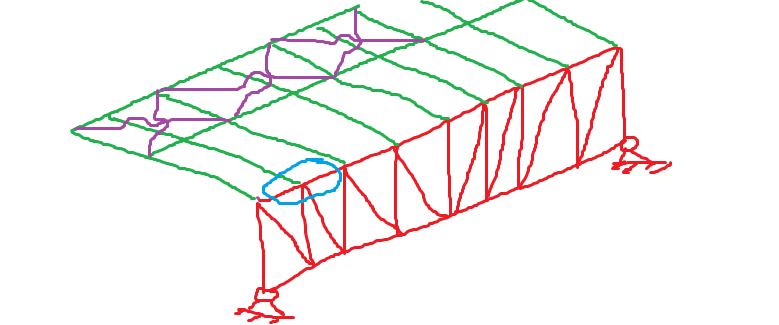brTCP
Structural
- Oct 24, 2022
- 38
The literature seems unclear on this one. In the picture below, every other purlin is attached to the bracing system. Do I consider the top chord critical length 2L in this case or 1L (L being the distance between two nodes)?


